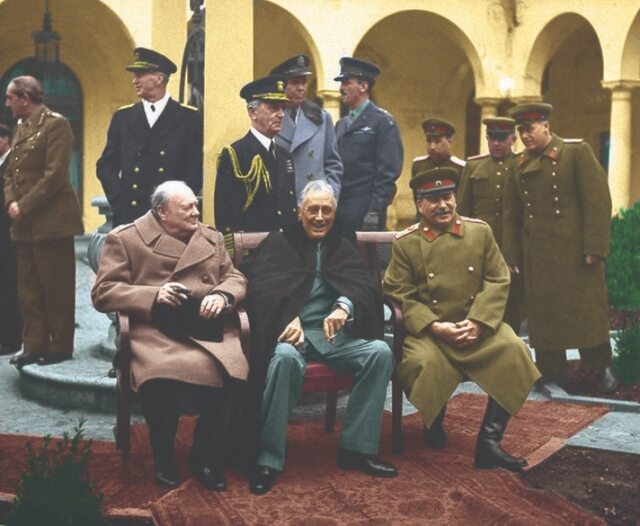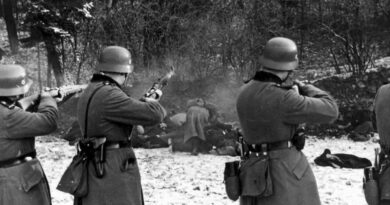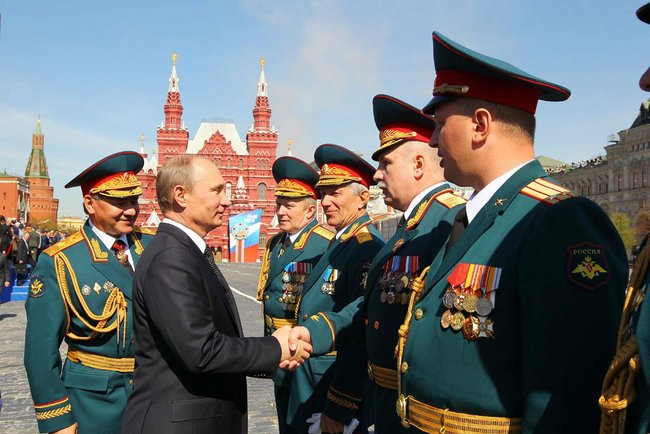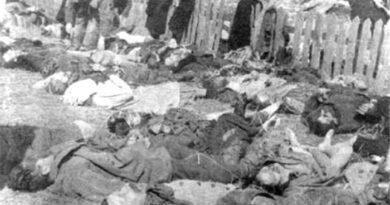How the Yalta Conference divided Europe and pushed Poland westward

The Yalta Conference was the second meeting of the “Big Three” – that is, the leaders of the United States, Great Britain, and the Soviet Union. The first conference was held in Tehran in late 1943.
The Yalta Conference, also sometimes referred to as the Crimean Conference, was held on February 4-11, 1945. Although the fighting was still going on, the “Big Three” were confident that victory over Germany was imminent. Europe was divided into two spheres of influence at Yalta, and the decisions made there were later reaffirmed at Potsdam.
The Yalta Conference
World War II was still being fought, but German forces were by then on the defensive. The Allies could already plan the shape of the post-war world with more confidence. The Yalta Conference was held on February 4-11, 1945. The very location of the meeting indicated who would call the shots, for Yalta lies in Crimea, which was then controlled by the Soviets.
Despite the fact that the various leaders meeting at the conference were allies, it was not free of tensions, although such irritation was successfully hidden. The Americans and British did not like the fact that the Red Army was approaching the German capital. American and British troops, who were in a race with the Soviets in the march to Berlin, no longer had a chance of overtaking the Soviet troops. The USSR already controlled all of Central and Eastern Europe. At Yalta, Stalin expected the Western powers to merely express their approval of this accomplished fact – in other words, Moscow’s authority over the territories that had been “liberated” by the Red Army.
The talks were held between British Prime Minister Winston Churchill, U.S. President Franklin Delano Roosevelt, and Soviet General Secretary Joseph Stalin.
The Yalta Conference exposed the weakening position of the British. Churchill began to be marginalized, and his secondary role was later confirmed at the Potsdam Conference (during which Stalin was even said to have mocked the British prime minister). It became clear at Yalta that London was being relegated to the background, and that power over the world would be in the hands of the USA and the USSR.
“Germany’s defeat, France’s weakening, and the rise of the Soviet Union’s power doomed the chances for a balance of power on the European continent. President Roosevelt’s noble idea that there should be efforts made to dismantle the colonial system after the war posed a serious threat to Britain. Churchill perceived most of these threats to the stability of post-war Europe, but he was unable to prevent them,” wrote the Polish Professor Andrzej Garlicki in his book Historia 1939-1997/98.
The Americans were also in an uncomfortable position at Yalta, as they were still at war with the Japanese in the Far East. Roosevelt hoped to gain assurances from Stalin that the Soviets would join the war against Japan when hostilities in the West ceased. Stalin agreed to provide aid to the Americans on the condition that Washington would acknowledge the Soviet sphere of influence in Eastern and Central Europe and grant the USSR the Kurile Islands, which lie in the Far East. Roosevelt agreed to this.
The Polish issue
Polish affairs were decided at Yalta without consulting Poland and without the participation of any Polish representative or politician.
Britain and the United States agreed to cede those Polish lands that were east of the Curzon Line to the Soviets. “In return,” Poland’s borders with Germany were to be moved westward. Poland was to wave farewell to the Kresy, i.e. the eastern borderlands comprising cities such as Lvov and Vilnius, but would gain lands in the west (called the “recovered lands” in the propaganda of the Polish communist authorities, as these lands had been Polish centuries before).
The Allies endorsed the establishment of communist authorities in those territories that had been “liberated” by the Red Army, which in practice meant recognition of the communist Provisional Government of National Unity (TRJN) and the withdrawal of support for the Polish Government in Exile, which until then had been considered the Polish state’s only legal authority.
Stalin assured his allies that free elections would be held on Polish territory, and also informed them that he would fight those “enemies” that were operating on Polish territory (which in fact meant cracking down on the armed independence underground. The Allies naively considered this to be a good thing and did not protest.
The Yalta arrangements outraged the Polish government that was headed by Prime Minister Tomasz Arciszewski. On February 13, 1945, the Polish Government in Exile issued a statement saying:
“(…) the decisions made by the ‘Big Three’ were prepared and taken not only without the involvement of the Polish Government, but also without its knowing. This kind of behavior in relation to Poland is not only a denial of elementary principles which apply to allies, but it is an unquestionable violation of the letter and spirit of the Atlantic Charter and the right of everyone to defend his own interests. For this reason, the decisions taken at the Conference cannot be recognized by the Polish Government and cannot be binding upon the Polish Nation. The Polish Nation sees the detachment of the eastern lands by imposing the so-called Curzon Line as the Polish-Soviet border as a new partition of Poland, this time by Polish allies.”
Perceptions of Yalta
At the Yalta Conference, the “Big Three” decided to divide Germany into four occupation zones (American, British, French, and Soviet). It was also decided to resettle the German population in those areas that were to be incorporated into Poland deep inside Germany. It was further agreed that Nazi war criminals would be tried before a special tribunal. In addition, Germany was to pay war reparations, and German society was to be denazified.
The Yalta Conference is for many people – especially in Poland – a symbol of the West’s betrayal. The saying “a second Yalta” has in a sense entered the canon of Polish politics, and signifies present-day suspicions that the West is seeking an agreement with Russia by going over Poland’s head.
The Yalta Conference was largely a reaffirmation of what had already been agreed at the Tehran Conference less than a year and a half earlier. At the beginning of 1945, the Red Army seemed truly invincible to the Allies. By then, Roosevelt and Churchill no longer had the power to force Stalin to return those territories that he had seized. The British and American leaders simply wanted to win the war and end it as soon as possible. In addition, they had their public opinion in the back of their minds. In February, Roosevelt was still considering how to win the war with Japan and force Tokyo to surrender. Washington therefore needed Moscow to attack Japan when the war in Europe ended.
Poland’s fate had already been sealed in Tehran. Yalta merely confirmed this state of affairs. Both the Tehran and the Yalta conference were great successes for Stalin. In the West, it was certainly realized that the decisions made at these meetings were creating a new world order. Surrendering Central and Eastern Europe to Stalin, however, was a “sacrifice” they were prepared to make.
This article was first published in Polish on the website of the Historia Do Rzeczy monthly in February 2024.



